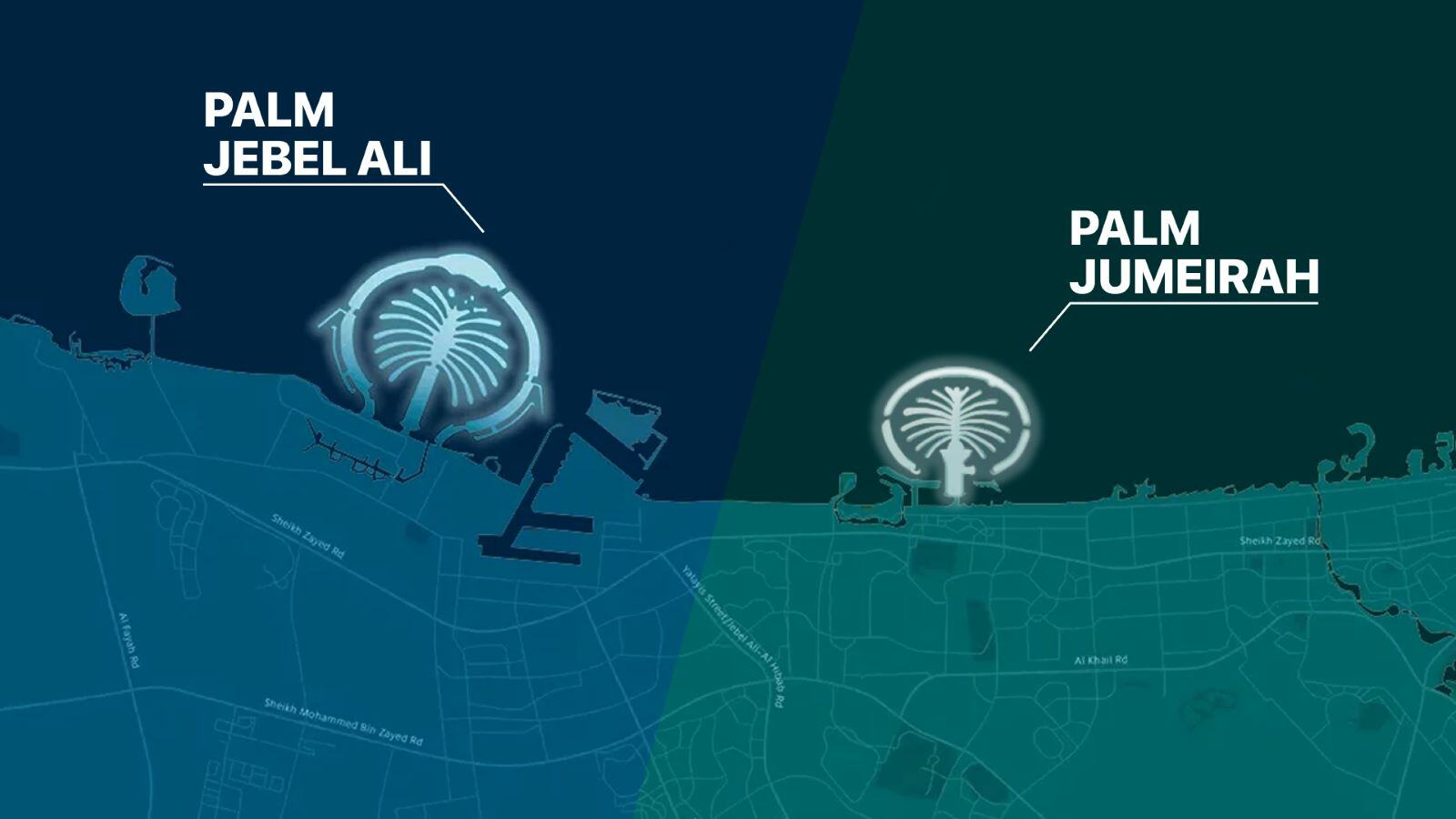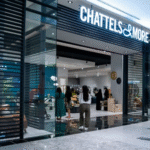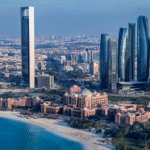Now Reading: Dubai’s Fastest Growing Real Estate Zones in 2025
-
01
Dubai’s Fastest Growing Real Estate Zones in 2025
Dubai’s Fastest Growing Real Estate Zones in 2025
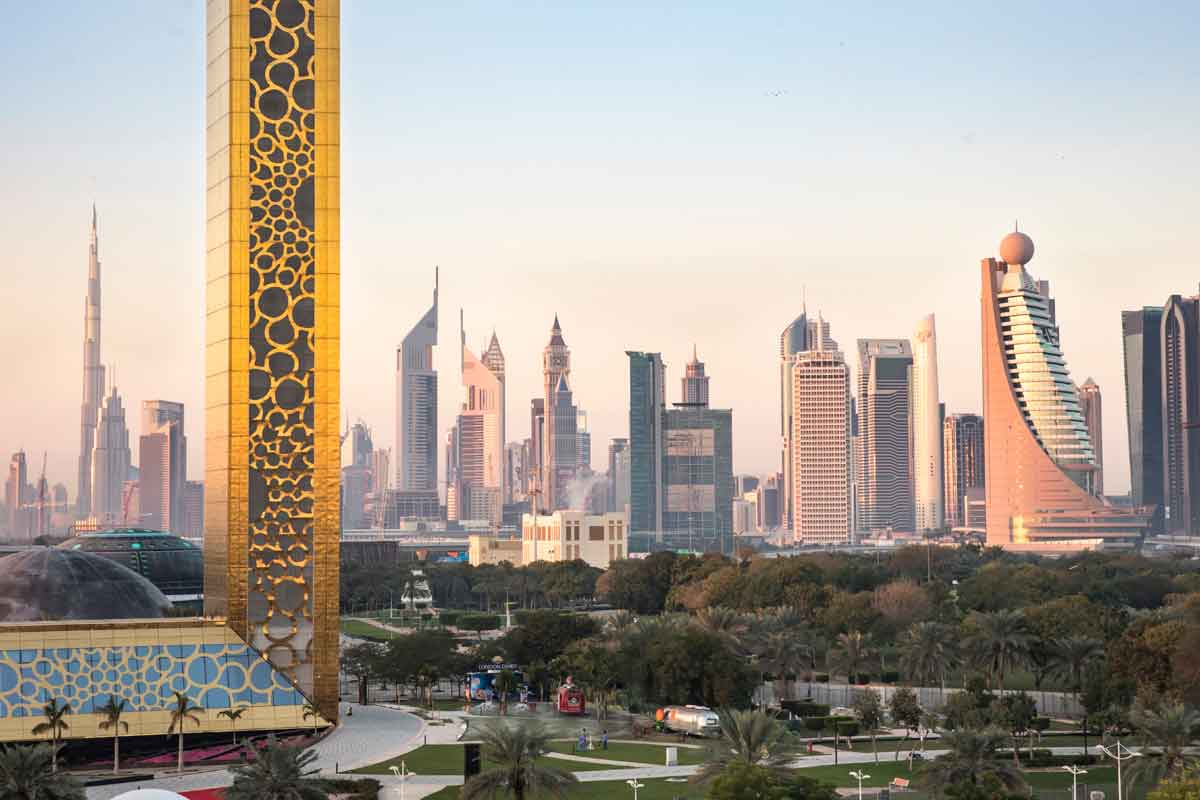
Table of Contents
Picture yourself standing on a balcony, gazing at a skyline that pulses with ambition or a waterfront that whispers tranquility, knowing your investment is riding the wave of Dubai’s explosive growth. In 2025, Dubai’s real estate market is a global juggernaut, with 96,000 transactions worth $87 billion in the first half, 58% driven by buyers from the UK, India, Russia, and China.
Offering 100% freehold ownership, a dirham pegged to the U.S. dollar, and no personal income tax, capital gains tax, or annual property taxes, Dubai delivers 6-10% rental yields and 8-15% price appreciation, outpacing London (2-4%) or New York (2-3%).Properties over $545,000 qualify for a 10-year Golden Visa, while smaller units offer 2-year residency.
With 25 million tourists and a 4% population surge, demand is skyrocketing, but navigating transfer fees, VAT, and 2025 regulations is crucial. This guide explores five of Dubai’s fastest-growing real estate zones Dubai South, Dubai Islands, Dubai Harbour, Business Bay, and Jumeirah Village Circle (JVC) highlighting projects like Dubai South Residential City, Nakheel’s Waterfront Towers, Emaar Beachfront, Canal Front Residences, and Binghatti Heights to help you seize the hottest investment opportunities.
Why Dubai’s Growth Zones Are Investor Goldmines
These zones, 15-40 minutes from Dubai International Airport via Sheikh Zayed Road or metro, offer diverse properties from affordable apartments to luxury waterfront towers, with vacancy rates at a low 2-3% compared to 7-10% globally. Investors keep 100% of rental income ($48,000-$240,000 annually on a $1.2 million-$4 million property), versus $26,400-$144,000 elsewhere after taxes.
Zero capital gains tax saves $60,000-$280,000 on a $300,000-$1 million profit, and no annual property taxes save $12,000-$80,000 yearly, unlike London’s council tax (up to 2%) or New York’s property tax (1-2%). Residential purchases dodge 5% VAT ($60,000-$200,000), and Golden Visa perks add residency security.
These zones are fueled by infrastructure projects, tourism, and population growth, but fees and corporate taxes need strategic planning.
Investing here feels like catching a rising star at its brightest.
No Personal Income Tax: Your Rentals, Your Profits
None of these zones charge personal income tax, letting you pocket 100% of rental income, unlike the U.S. (up to 37%) or UK (up to 45%). A $1.2 million JVC apartment yielding $72,000-$96,000 annually saves $26,640-$43,200 compared to taxed markets. A $4 million Dubai Harbour penthouse yielding $160,000-$240,000 saves $72,000-$96,000.
Short-term rentals, boosted by 25 million tourists, require a DTCM license ($408-$816), increasing yields by 15-20% ($12,000-$48,000) in Dubai Harbour and Dubai Islands. Long-term leases need Ejari registration ($54-$136) for stability. Non-compliance risks fines up to $13,612, so staying compliant keeps your profits intact.
Tax-free rentals feel like a monthly windfall for your wallet.
Zero Capital Gains Tax: Keep Every Sale Profit
All five zones offer zero capital gains tax, letting you keep 100% of sale profits. Selling a $1.2 million JVC apartment for $1.5 million after 25% appreciation yields a $300,000 tax-free profit, saving $60,000-$84,000 compared to London (20-28%) or New York (20-37%).
A $4 million Dubai Harbour penthouse sold for $5 million yields a $1 million tax-free gain, saving $200,000-$280,000. Price growth varies: Dubai South and Dubai Islands hit 10-15% annually, Dubai Harbour and Business Bay 8-12%, and JVC 7-9%. A 4% Dubai Land Department (DLD) fee applies on resale ($48,000-$160,000), often split, but tax-free profits amplify your returns.
Every dirham you keep feels like a financial victory.
No Annual Property Taxes: Save on Ownership
Unlike global markets where annual property taxes cost $12,000-$80,000 on a $1.2 million-$4 million property, these zones have none, freeing up cash for reinvestment. Maintenance fees vary: $12,000-$18,000 for Dubai Harbour’s Emaar Beachfront, $10,000-$15,000 for Business Bay and Dubai Islands, $8,000-$12,000 for Dubai South, and $5,000-$10,000 for JVC.
A 5% municipality fee on rentals ($2,400-$12,000) applies, higher in Dubai Harbour due to premium amenities. These costs are lower than London’s council tax ($24,000-$80,000) or New York’s property tax, making ownership budget-friendly.
No property taxes feel like a weight lifted from your investment.
VAT Rules: A Residential Investor’s Edge
Residential purchases in these zones skip 5% VAT, saving $60,000-$200,000 on a $1.2 million-$4 million property, unlike commercial properties or the UK’s stamp duty (up to 12%, or $144,000-$480,000). Off-plan purchases, common in Dubai South and JVC, may incur 5% VAT on developer fees ($20,000-$80,000), recoverable via Federal Tax Authority (FTA) registration ($500-$1,000).
Short-term rental operators must register for VAT if revenue exceeds $102,041, charging 5% but claiming credits on expenses like DTCM fees ($408-$816). A $1.2 million JVC apartment yielding $72,000-$96,000 incurs $3,600-$4,800 in VAT but allows $1,000-$2,000 in credits. Non-compliance risks fines up to $13,612, so meticulous records are essential.
VAT exemptions feel like a friendly boost to your investment.
DLD Fees and Title Deeds: Securing Your Asset
The 4% DLD fee, typically split, is a key cost: $48,000 for a $1.2 million JVC apartment or $160,000 for a $4 million Dubai Harbour penthouse. Gift transfers to family or shareholders reduce DLD to 0.125%, saving $46,500-$155,000. For example, gifting a $4 million property cuts the DLD fee from $160,000 to $5,000. Title deed issuance costs $136-$272 and must be registered with the DLD.
Broker fees, typically 2% ($24,000-$80,000), may be waived for off-plan projects in Dubai South. Mortgage registration (0.25% of the loan, or $3,000 for a $1.2 million loan) and valuation fees ($680-$1,360) apply for financed deals. The 2025 Oqood system ensures escrow compliance for off-plan purchases, safeguarding your funds.
Title deeds feel like the key to your Dubai dream.
Corporate Tax: A Note for Business Investors
The 9% corporate tax, introduced in 2023, applies to businesses with profits over $102,110. A company leasing a $1.2 million JVC apartment yielding $72,000-$96,000 faces a 9% tax ($6,480-$8,640), reducing net income to $65,520-$87,360. A $4 million Dubai Harbour penthouse yielding $160,000-$240,000 incurs $14,400-$21,600 in tax. Qualified Free Zone Person (QFZP) status in areas like Dubai Multi Commodities Centre (DMCC) avoids this, saving $12,240-$61,200, with setup costs of $2,000-$5,000. Small business relief waives corporate tax for revenues under $816,000 until December 31, 2026. Individual ownership skips this tax entirely.
Corporate tax feels like a hurdle you can clear with strategy.
New Tax Rules for 2025
The Domestic Minimum Top-up Tax (DMTT), effective January 1, 2025, imposes a 15% tax on multinationals with revenues over €750 million ($793 million). Individual investors and smaller entities are unaffected, and QFZP status avoids DMTT, saving $12,240-$61,200. Cabinet Decision No. 34 refines Qualifying Investment Fund (QIF) rules, exempting corporate tax if real estate income is below 10%.
A QIF earning $1 million, with $200,000 from rentals, faces 9% tax ($14,400) on 80% ($160,000). A July 2025 policy allows corporate tax deductions on fair market value depreciation, saving $6,545-$9,000 annually for a $3 million property revalued at $3.75 million.
New rules feel like a game with profitable moves.
1. Dubai South: Residential City
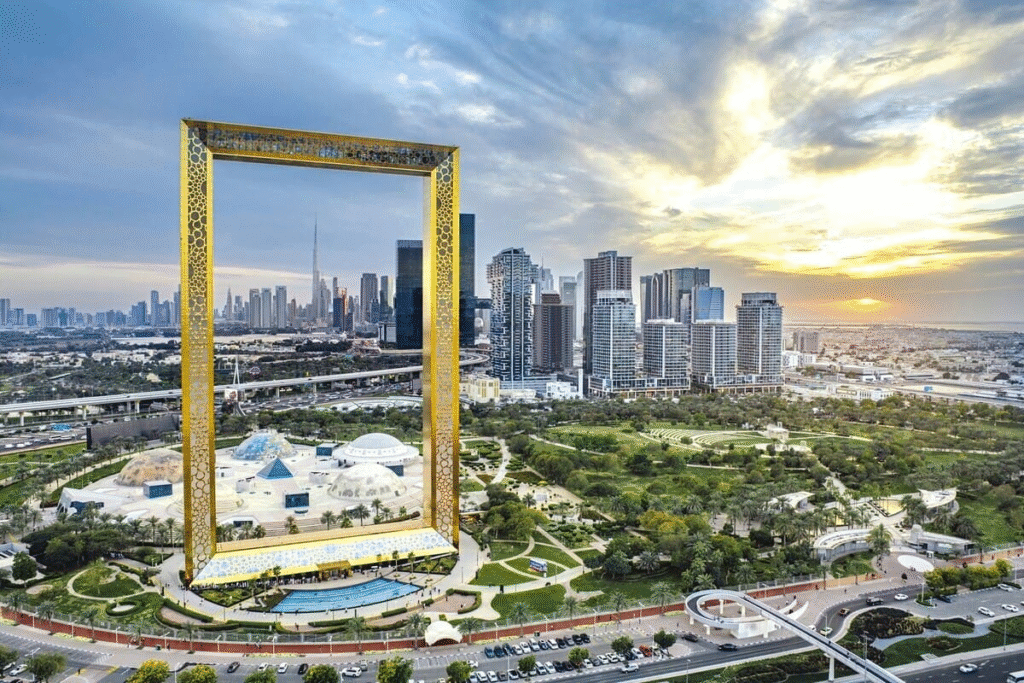
Dubai South Residential City, near Al Maktoum International Airport, offers apartments ($800,000-$1.2 million) with 6-8% rental yields and 10-15% price growth, driven by airport expansion and EXPO 2020 legacy. A $1.2 million apartment yields $72,000-$96,000 tax-free, saving $26,640-$43,200. Selling for $1.5 million yields a $300,000 tax-free profit, saving $60,000-$84,000. No property taxes save $12,000-$24,000, and VAT exemption saves $60,000.
Transfer costs include a 4% DLD fee ($48,000), 2% broker fee ($24,000), and title deed issuance ($136-$272). Maintenance fees are $8,000-$12,000, with a 5% municipality fee ($3,600-$4,800). QFZP saves $12,240-$18,360. U.S. investors deduct depreciation ($21,818-$43,636), saving up to $17,455. Golden Visa eligibility applies for properties over $545,000.
Dubai South feels like a budget-friendly rocket to riches.
2. Dubai Islands: Nakheel’s Waterfront Towers
Dubai Islands, a new Nakheel project, offers waterfront apartments ($1.5 million-$3 million) with 7-9% rental yields and 8-12% price growth, fueled by new infrastructure. A $1.5 million apartment yields $60,000-$90,000 tax-free, saving $27,000-$36,000. Selling for $1.8 million yields a $300,000 tax-free profit, saving $60,000-$84,000. No property taxes save $15,000-$30,000, and VAT exemption saves $75,000.
Transfer costs include a 4% DLD fee ($60,000), 2% broker fee ($30,000), and title deed issuance ($136-$272). Maintenance fees are $10,000-$15,000, with a 5% municipality fee ($3,000-$4,500). QFZP saves $20,400-$30,600. U.S. investors deduct depreciation ($27,272-$54,545), saving up to $14,545. Its affordability and marina views drive rental demand.
Dubai Islands feel like a rising star with strong returns.
3. Dubai Harbour: Emaar Beachfront
Emaar Beachfront in Dubai Harbour ($2 million-$5 million) offers 6-8% rental yields and 8-12% price growth, boosted by its marina and proximity to Palm Jumeirah. A $2 million apartment yields $80,000-$120,000 tax-free, saving $36,000-$48,000. Selling for $2.4 million yields a $400,000 tax-free profit, saving $80,000-$112,000. No property taxes save $20,000-$40,000, and VAT exemption saves $100,000.
Transfer costs include a 4% DLD fee ($80,000), 2% broker fee ($40,000), and title deed issuance ($136-$272). Maintenance fees are $12,000-$18,000, with a 5% municipality fee ($4,000-$6,000). QFZP saves $20,400-$61,200. U.S. investors deduct depreciation ($36,364-$54,545), saving up to $19,091. Golden Visa eligibility enhances appeal.
Dubai Harbour feels like a serene, high-yield waterfront gem.
4. Business Bay: Canal Front Residences
Canal Front Residences by Meydan ($1.5 million-$3 million) offer 6-8% rental yields and 8-12% price growth, driven by its central location and canal views. A $1.5 million apartment yields $60,000-$90,000 tax-free, saving $27,000-$36,000. Selling for $1.8 million yields a $300,000 tax-free profit, saving $60,000-$84,000. No property taxes save $15,000-$30,000, and VAT exemption saves $75,000.
Transfer costs include a 4% DLD fee ($60,000), 2% broker fee ($30,000), and title deed issuance ($136-$272). Maintenance fees are $10,000-$15,000, with a 5% municipality fee ($3,000-$4,500). QFZP saves $20,400-$30,600. U.S. investors deduct depreciation ($27,272-$54,545), saving up to $14,545. Its business hub proximity attracts professionals.
Business Bay feels like a vibrant, urban profit machine.
5. Jumeirah Village Circle (JVC): Binghatti Heights
Binghatti Heights offers 1-2 bedroom apartments ($800,000-$1.2 million) with 7-10% rental yields and 7-9% price growth, fueled by affordability. A $1.2 million apartment yields $84,000-$108,000 tax-free, saving $31,080-$48,600. Selling for $1.5 million yields a $300,000 tax-free profit, saving $60,000-$84,000. No property taxes save $12,000-$24,000, and VAT exemption saves $60,000.
Transfer costs include a 4% DLD fee ($48,000), 2% broker fee ($24,000), and title deed issuance ($136-$272). Maintenance fees are $5,000-$10,000, with a 5% municipality fee ($4,200-$5,400). QFZP saves $14,400-$19,440. U.S. investors deduct depreciation ($21,818-$43,636), saving up to $17,455. Golden Visa eligibility applies for properties over $545,000.
JVC feels like a budget-friendly path to wealth.
Comparing ROI Across Zones
JVC (7-10%): Highest yields, ideal for budget investors.
Dubai South (6-8%): Strong growth, airport-driven demand.
Dubai Islands (7-9%): Affordable, waterfront appeal.
Dubai Harbour (6-8%): Balanced yields, luxury marina vibe.
Business Bay (6-8%): Urban demand, professional tenants.
ROI Verdict: JVC leads with 9-12% ROI for affordability, Dubai South and Dubai Islands offer 8-10% with growth potential, Dubai Harbour and Business Bay deliver 7-9% for luxury and stability.
Choosing feels like picking the brightest gem in Dubai’s crown.
Strategies to Maximize Returns
For individuals: First, hold properties personally to avoid corporate taxes, saving $12,240-$61,200. Second, negotiate DLD fee splits, saving $24,000-$80,000. Third, use gift transfers to reduce DLD to 0.125%, saving $46,500-$155,000. Fourth, recover 5% VAT on developer fees via FTA registration ($500-$1,000). Fifth, leverage double taxation treaties with 130+ countries, saving $26,640-$96,000.
Sixth, U.S. investors deduct depreciation ($21,818-$54,545), saving up to $19,091. For corporates: Secure QFZP status, keep QIF income below 10%, and claim depreciation deductions. Hire property managers ($10,000-$25,000 annually) and tax professionals ($1,000-$3,000) to avoid fines up to $136,125. Focus on short-term rentals in Dubai Harbour and Dubai Islands for higher yields.
These strategies feel like a treasure map to riches.
Risks to Watch in 2025
A projected oversupply of 182,000 units by 2026 may slow price growth, though Dubai South and Dubai Islands’ new developments mitigate this. Choose trusted developers like Emaar, Nakheel, or Meydan and verify escrow compliance via the 2025 Oqood system. Non-compliance with VAT or DTCM rules risks fines up to $13,612, and corporate tax errors can cost $136,125. Indian investors must disclose properties in India’s Foreign Asset schedule to avoid $135,000 penalties. Currency fluctuations, like a 5% dirham shift, could impact returns.
Why These Zones Are Booming
Dubai South’s airport-driven growth, Dubai Islands’ waterfront allure, Dubai Harbour’s luxury marina, Business Bay’s urban pulse, and JVC’s affordability offer 6-10% yields and 7-15% growth, saving $12,000-$280,000 annually with no taxes. With Golden Visa perks and soaring demand, these zones are Dubai’s fastest-growing real estate stars in 2025. Navigate fees, choose wisely, and secure your wealth in this thriving market.
read more: Jumeirah Islands vs Palm Jumeirah: Property Comparison Guide



